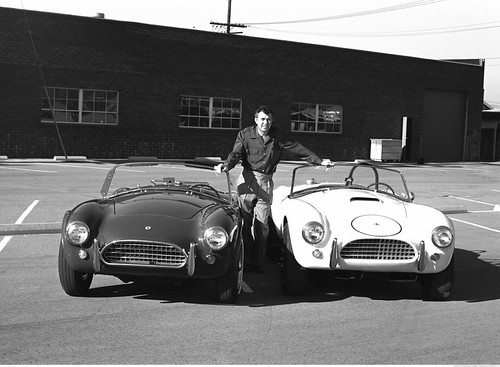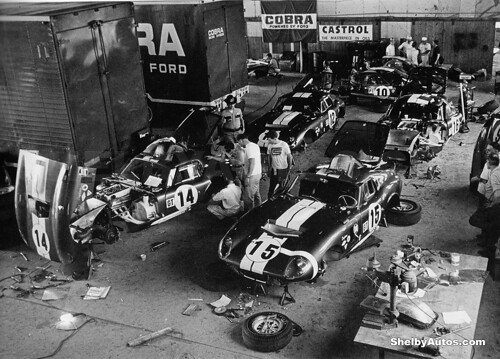Carroll Shelby, a Texas chicken farmer turned hot-rodder who went on to build innovative sports cars like the Cobra, the Peter Brock designed Shelby Daytona Cobra Coupe that challenged Europe’s longtime dominance of road racing and also high-performance versions of production cars like the Ford Mustang and GT40, died on Thursday in Dallas. He was 89.

Carroll Shelby poses with his A/C Cobras at 1042 Princeton Drive.
The Shelby-American automobile company was originally located here in Venice (now considered Marina Del Rey) at 1042 Princeton Drive in March of 1962. The property was recently sold for $6.5 million. Shelby later moved his company to a facility near Los Angeles International Airport in 1965 and then to a shop outside of the Las Vegas Motor Speedway.
The Shelby-American production line at 1042 Princeton Drive.
From The New York Times:
In the 1960s, Shelby raised the profile of American racing machines on the international sports-car circuit by packing powerful Ford V8 engines into lightweight British roadsters, and by developing racing cars for Ford.
His Shelby Cobras proved worthy competitors to the likes of Ferrari, Maserati and Jaguar and became prized collector’s items, commanding six- and seven-figure prices today.
The Shelby-American team’s Ford GT40 won the 24 Hours of Le Mans in 1966 and 1967. Those victories ended a Ferrari winning streak that began in 1960, the year after Shelby teamed with Roy Salvadori of Britain to win in their Aston Martin.
Phil Hill, co-driving a Ferrari, was the only American-born racer to have won at Le Mans before Shelby, capturing the race in 1958. (Luigi Chinetti, who won in 1949, was an American citizen but was born in Italy.)
“Carroll desperately wanted to beat all the Europeans at Le Mans,” C. Van Tune, a onetime Shelby employee who was later editor in chief of Motor Trend magazine, told The Dallas Morning News in 2001. “He wanted to show all those fancy, highbred Euros in their slick racing suits that a chicken farmer from Texas could beat them at their own game.”
Click here to continue reading this article at the New York Times.


























